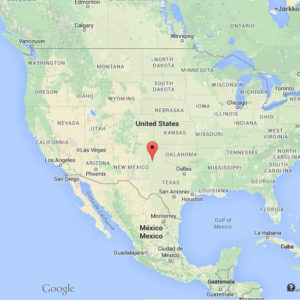 Texas, USA
Texas, USAFind, 1942
H3.7 Chondrite
Complete specimen, 6195g + 393g cut piece
Size: 22,5 x 14,0 x 17,0 cm
Remarks: Biggest existing piece
History:
At least 21 stones were found around 1942 in Castro County, Texas, but the Dimmit meteorite was not recognized as a distinct fall until 1950. A majority of the original specimens became part of the Monnig collection at TCU.
Dimmit meteorite is a regolith breccias and it can contain elements of LL group, carbonaceous and other rare meteorite types. Exotic clasts in chondrite regolith breccia are either late accureted projectiles or were dericed from exotic outcrops on the parent body surface. These outcrops could be fragments of exotic planetesimals that accreted to the H chondrite parent body early (4,5 billion years ago) in Solar System history. Even if the temperatures were on the order of 900˚C when the planetesimals accreted, diffusion would not have altered the exotic planetesimals original oxygen isotopic compositions.
Some slowly cooled impact melt rock clasts (e.g. DT4 in Dimmit) were probably formed beneath deep (hundreds of meters) melt breccias piles on the floors of impact craters that were several kilometers in diameter. Subsequent impacts at the same locality were necessary to excavate such clasts and deposit them in the regolith. Such complexity is probably characteristic of asteroidal regolith processes.
Specimen Description:
This is the biggest existing complete piece of Dimmit.
Reference:
Meteoritical Bulletin Database
Alan E. Rubin, Edward R. D. Scott, Jeffrey Taylor, Klaus Keil and Jaclyn S. B. Allen.: Nature of the H Chondrite parent body regolith: Evidence from the Dimmitt breccia: Journal of Geophysical Research, vol. 88, supplement, pages A741-A754, February 15, 1983.
http://www.starcatching.com/mets.htm?dimmit
Catalogue of Meteorites: Monica M. Gra
Jarkko Kettunen Meteorite Collection © 2025
